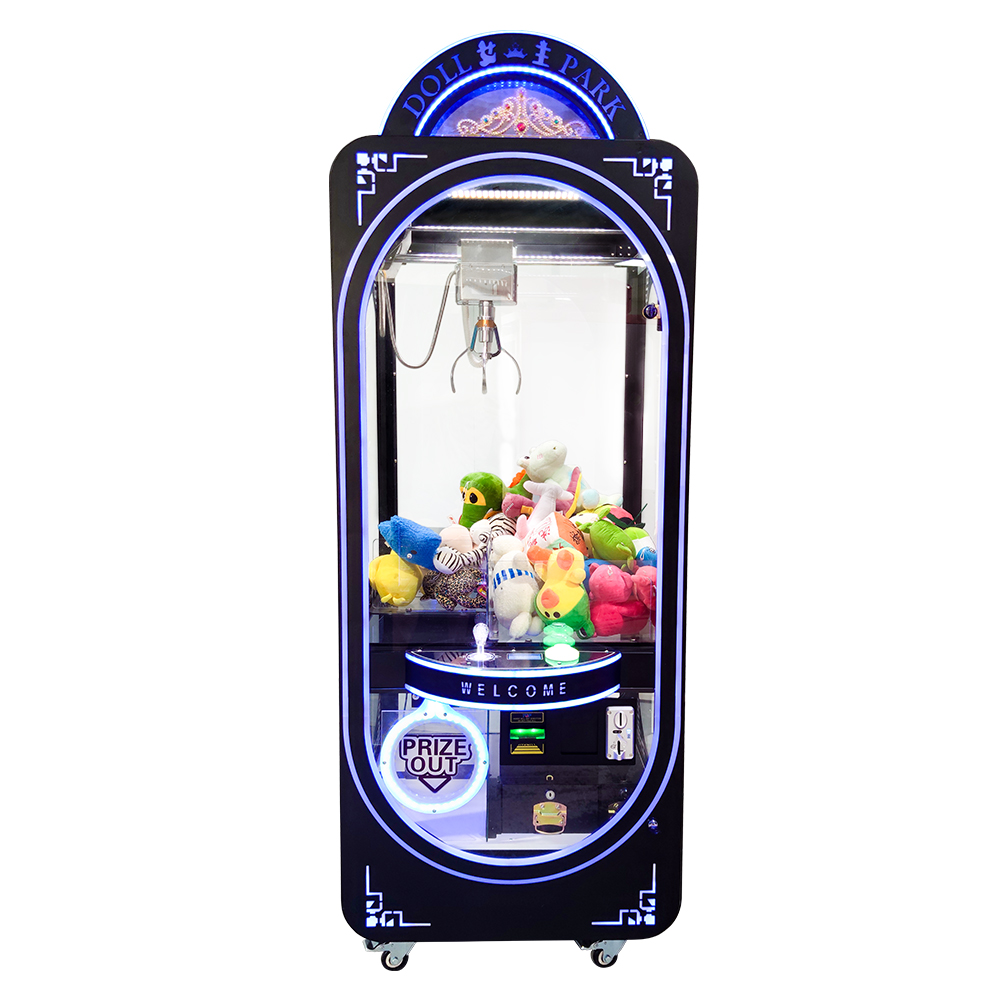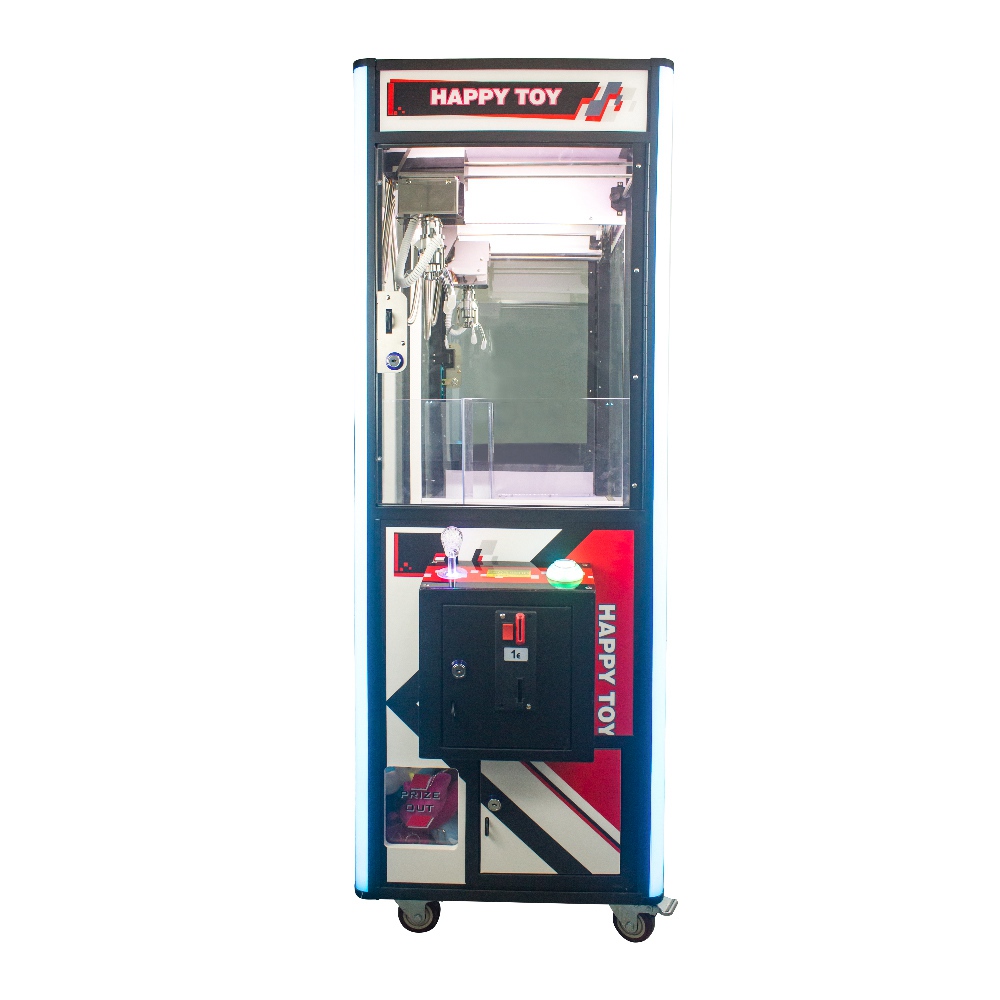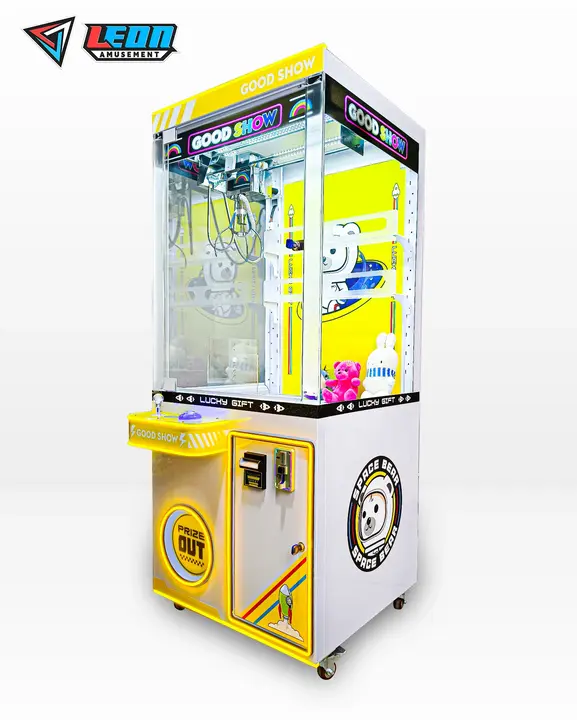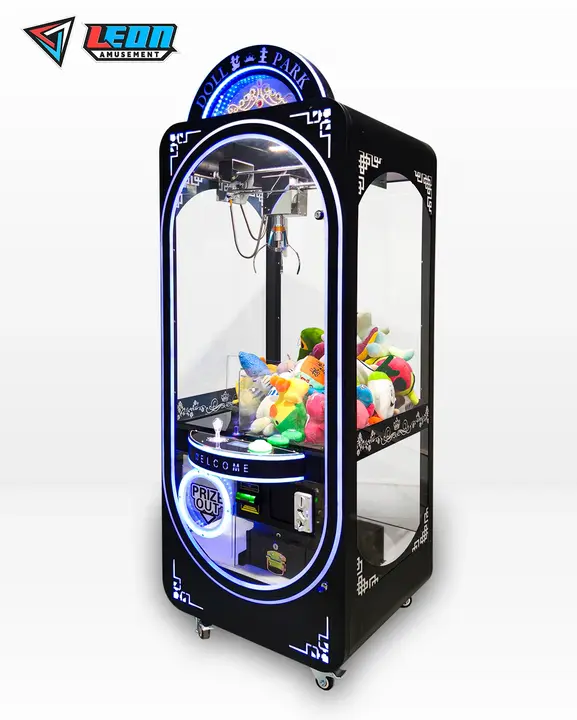Upgrading control systems and using IoT tech boosts efficiency by 25%, reducing mechanical failures and extending machine lifespan.
Table of Contents
ToggleQuality of Materials
Durability of Components
The quality of materials will also affect how long your claw machines have to live. The claw and mechanical parts are built with high-grade metals to ensure that the machine can be used repeatedly, without much wear.
Resistant Material used:
- Steel (Stainless Steel) is a suitable material for the claw, as it provides resistance against rust and corrosion and prolongs its life.
- Another comparative study demonstrated that machines equipped with stainless steel claws would last up to 30% longer in comparison with cheaper alloys.
Cabinet Construction
Another important consideration is the construction of the cabinet. In case of the claw machine cabinets made of high-quality materials such as high-density polyethylene (HDPE) or treated wood, there is less risk of breakage and damage since they can withstand regular wear and tear easily.
- A quality cabinet will last more than 50,000 plays before it begins to wear out.
- Cabinets made from cheaper materials and manufacturers can deteriorate after only 20,000 plays on average.
Electronic Components
The lifespan of a claw machine will also depend on the quality of its electronic components. High-quality circuit boards and wiring not only improve the overall performance of the machine but also minimize the chances of a breakdown.
- For instance, within 5 years, the failure rate of machines containing top-end electronics was lower than 5%, whereas in those with poor-quality components, it went up over 20%.
Glass and Acrylic Quality
This is all about the quality of the glass and acrylic used for those viewing windows.
- If made of tempered glass or quality acrylic, they can avoid scratch and crack marks and look good no matter how long they’ve had the machine.
- Tempered glass is up to four times stronger than standard alternatives, giving you not only a more secure solution but also one that will last longer.
Quality of Prizes
The quality of prizes is often overlooked, but this can also contribute to the lifespan of a machine. Prizes that are heavier or not regular in shape can cause more wear and tear on the claw mechanism.
- Where possible and not indicative of the prize type set, prizes should be lightweight in a uniform shape to reduce strain on any parts, allowing the machine to operate for longer.
- For example, plush toys weighing less than 200 grams each are acceptable as they minimally impact the claw’s ability to pick up tickets.

Usage Frequency
Impact of Daily Play Count
The frequency with which a claw machine is used directly influences its wear and tear. Machines located in high-traffic areas, such as busy arcades or amusement parks, experience significantly more use than those in less frequented spots. On average, a claw machine in a busy arcade might handle over 500 plays per day, leading to quicker degradation of mechanical components like the claw motor and gears. Regular monitoring and adjustment are crucial in such environments to maintain optimal performance.
Maintenance Intervals Based on Usage
Higher usage necessitates more frequent maintenance. For machines that experience heavy daily use, a maintenance schedule of every 1,000 plays is recommended. This includes checking and lubricating moving parts, inspecting the claw mechanism for wear, and ensuring the electronics are functioning correctly. Machines with moderate use can often extend this interval to every 3,000 plays, balancing the need for maintenance with operational uptime.
Operational Hours and Fatigue
Extended operational hours contribute to machine fatigue. Running a claw machine continuously for more than 12 hours a day accelerates the wear on both mechanical and electronic components. Studies show that machines operated for 16 hours daily require major servicing twice as often as those run for 8 hours daily. Implementing a schedule that includes downtime for the machine can significantly extend its lifespan.
User Handling and Misuse
The way users interact with the machine also plays a role. Rough handling, such as shaking or hitting the machine, can damage internal components and reduce its lifespan. Placing clear instructions and employing robust construction can mitigate these risks. For example, machines with reinforced internal brackets and tamper-proof screws have shown a 25% decrease in damage from misuse.
Performance Monitoring and Adjustments
Regular performance monitoring helps identify issues early. Installing monitoring software that tracks play count, success rates, and mechanical strain provides valuable data. Machines equipped with such monitoring systems report up to 40% fewer breakdowns, as operators can proactively address potential problems before they lead to failures. Additionally, adjusting the claw strength and drop rate based on usage data can optimize performance and longevity.
Maintenance Practices
Regular Inspection Routines
Consistent and thorough inspection routines are crucial for extending the lifespan of a claw machine. Regular inspections should include checking the claw mechanism, motors, wiring, and control systems for signs of wear and tear. A bi-weekly inspection schedule can reduce unexpected failures by up to 30%, as potential issues are identified and resolved before they escalate.
Lubrication and Cleaning
Proper lubrication of moving parts ensures smooth operation and reduces friction, which can cause premature wear. Components such as the claw motor, gears, and tracks should be lubricated every 500 plays. Using high-quality lubricants can extend the service life of these parts by 20%. Additionally, regular cleaning of the cabinet, glass, and internal components prevents dust and debris buildup, which can impede functionality and cause damage.
Component Replacement Schedule
Establishing a proactive component replacement schedule helps maintain optimal machine performance. Parts like the claw motor, springs, and control buttons have finite lifespans and should be replaced before they fail. For example, replacing the claw motor every 10,000 plays can prevent mid-operation breakdowns, ensuring consistent user satisfaction and reducing downtime.
Software Updates and Calibration
Keeping the machine’s software updated is essential for maintaining performance and security. Regularly checking for and installing firmware updates ensures the machine operates efficiently and includes the latest features and fixes. Calibration of the claw strength and prize drop mechanism should be performed monthly to ensure fair play and prevent mechanical strain. Machines with regularly updated software and calibration have shown a 15% increase in operational efficiency.
Detailed Maintenance Logs
Maintaining detailed logs of all maintenance activities, including inspections, lubrication, cleaning, and part replacements, is critical. These logs help track the machine’s health over time and identify recurring issues. Operators who keep comprehensive maintenance logs report a 25% reduction in maintenance costs, as they can more accurately predict and prevent failures.

Environmental Conditions
Adjustable Temperature — Humidity
First of all, the placement environment has a great influence on the durability of a claw machine. Harsh high and low temperatures as well as high humidity levels increase early failure rates of electronic components and cause rust to form on metal parts.
- If you can manage a room temperature of between 65°F and 75°F (18°C to 24°C) with relative humidity no higher than sixty percent, you will delay the death of your washing machine.
- Machines in climate-controlled environments have a 40% lower failure rate than those without based on data.
Ventilation and Air Quality
For proper ventilation, there should normally be a way for heat to escape freely, which will also avoid the machine from getting overheated. Improper air circulation within the system can cause internal parts to overheat, forcing the system to break down now and again.
- Keeping the machine in a well-ventilated area where there is adequate airflow around it and the vents are not covered prevents any performance downgrade.
- Simply by cleaning the air filters and vents on a monthly basis, it can reduce the risk of overheating by 30%.
Dust and Debris Management
Dust and dirt can collect in the machine, causing moving parts to jam and electronic components to malfunction. It’s essential to keep the claw machine in a place where it would not be exposed to a lot of dust and to clean it regularly.
- Dust buildup can be considerably reduced by using protective covers during off-hours and utilizing air purifiers in the area.
- Machines that are kept in a clean work environment will last up to 20% longer.
Impact of High Traffic Areas
In addition to more frequent utilization, high traffic areas can also lead to further damage to the machine due to many users. Placing the vending machine in a location where it can be visible, but at the same time not subject to much jostling or vandalism, is crucial.
- Installing protective barriers or corner guards can reduce physical damage.
- Well-protected machines mean substantially less physical damage, adding to how long our equipment lasts.
Water and Spills Protection
The greatest danger to the electronic and mechanical components of a claw machine is moisture and liquid spills.
- Situate the machine away from food and drink areas to prevent spills.
- Opt for water-resistant coatings on your electronic components, or place the machine on a higher surface to prevent moisture from seeping in from the floor.
- Research shows that machines with water-resistant features are half as likely to suffer a moisture-induced breakdown
Technological Updates
Upgrading Control Systems
Updating the control system on a claw machine can yield great dividends to overall performance and sustainability. Today’s versions provide more exact clawing, easier prize discovery, and interfaces.
- Modern control systems enhance productivity by 25% due to improved efficiency, leading to a lower probability of breakdown or malfunctioning and overall improvement of user experience.
IoT and Remote Monitoring Implementation
Claw machines integrated with Internet of Things (IoT) technology can be easily monitored and managed remotely.
- Operators can monitor usage statistics, catch malfunctions at an early stage, and adjust machine settings in real-time.
- IoT-enabled machines can lower maintenance costs by 20% by detecting and solving potential issues early.
Software and Firmware Updates
Updating the machine software and firmware is important to maintain seamless functioning and security.
- Regular updates help fix bugs, add new features, and improve the app.
- Updating your machines’ software at least once every six months can lead to a 15% reduction in downtime.
- Many updates include software optimizations and security patches that fix problems affecting multiple users.
Investment in Energy-Efficient Technologies
The use of energy-efficient technologies results in reduced operating costs and less wear on electrical components.
- Ensure proper lighting from LEDs, best if attainable for low-power motors and through the use of efficient power supplies.
- Energy-efficient upgraded machines perform with up to 30% less power, which means less heat generation and longer hardware life.
Enhanced Security Features
Modern claw machines should include security measures like tamper-resistant locks, advanced encryption for payment systems, and strong physical security.
- The risk of vandalism and theft is 40% lower with these measures installed.
- They help keep the machine in good working order and prevent costly repairs.



